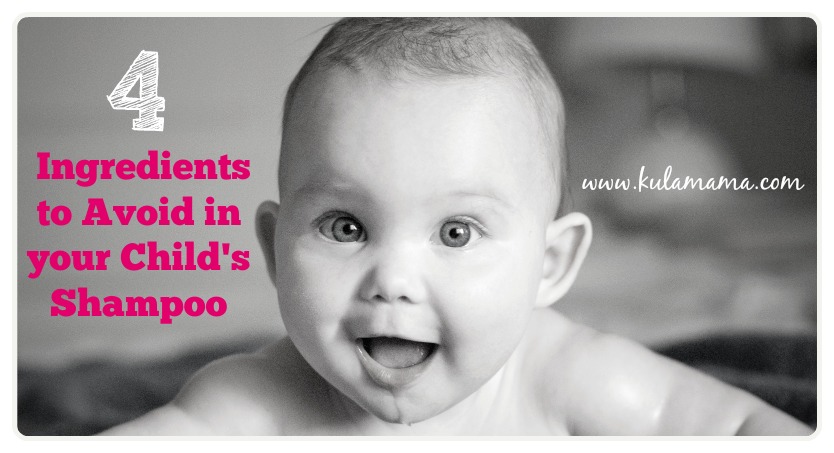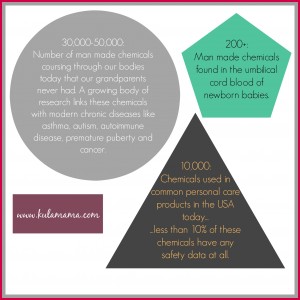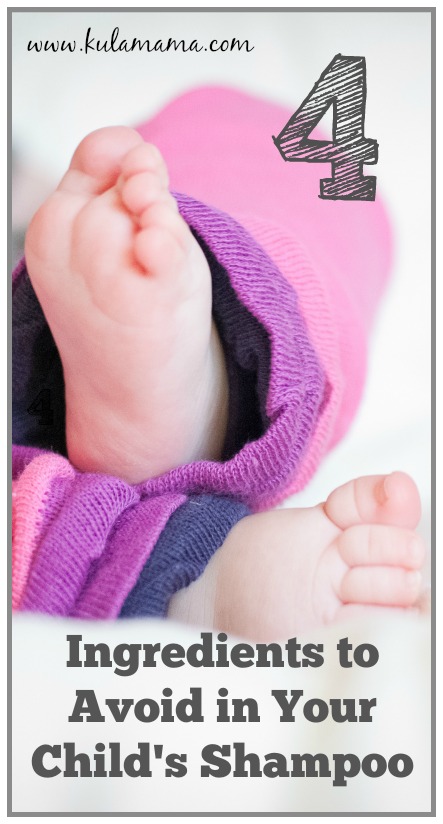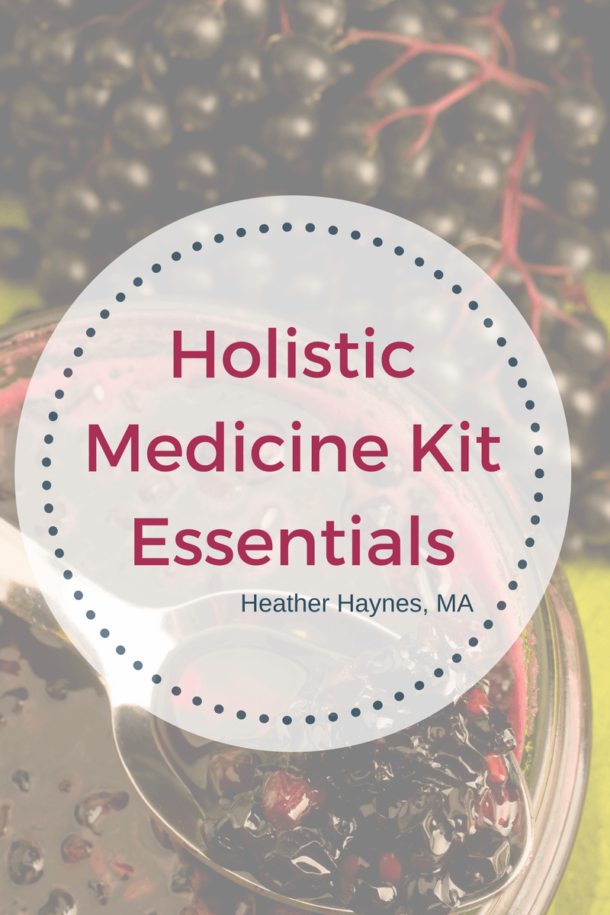There’s no better time than the new year to kick some unhealthy habits to the curb. Some of us are rushing to renew our gym memberships or starting a much-needed detox. Exercise and healthy eating are things we readily associate with good health and you won’t hear any different from me. But you might be surprised to know that the personal care products we use have a pretty big impact on our health, too. It’s crazy to think that cancer-causing chemicals are used freely in our children’s lotions and potions, without any warning label whatsoever. This year, avoid these 4 ingredients in your child’s shampoo, body wash, bubble bath and soap products for better health. (source for more ingredients to avoid)
Sodium Laureth Sulfate: SLS and SLES are surfactants that can cause skin irritation or trigger allergies. SLES is often contaminated with 1,4-dioxane, a byproduct of a petrochemical process called ethoxylation which is used to process other chemicals in order to make them less harsh.
1,4-dioxane: a by-product of manufacturing that is a probable human carcinogen (a known animal carcinogen) as well as toxic to organs and the respiratory system, and a skin irritant. Likely to be present where ethoxylated ingredients like sodium laureth sulfate, PEGs, and ceteareth are listed on ingredient labels.
Formaldehyde or Formaldehyde-Releasers: Formaldehyde and ingredients that release formaldehyde are used as preservatives in cosmetics. A known carcinogen that is also linked to asthma, neurotoxicity, and developmental toxicity. Present where quaternium-15, DMDM hydantoin, imidazolidinyl urea, diazolidinyl urea, sodium hydroxymethylglycinate, 2-bromo-2-nitropropane-1,3 diol (Bronopol) and several other preservatives are listed.
Fragrance: Fragrance is an engineered scent or flavoring agent that may contain any combination of 3,000+ stock chemical ingredients, including hormone disruptors and allergens. Fragrance formulas are protected under federal law’s classification of trade secrets, and therefore can remain undisclosed.
Why Kids Are At A Greater Risk
Children’s bodies are smaller than adults by body weight alone they are exposed to more chemicals than adults. Also, a child’s immune and organ systems are still developing and aren’t as adept at detoxing and protecting a child compared to an adult. Over time a child may be at a greater risk for disease due to the cumulative damage caused by environmental chemicals and many of these chemicals can be found in personal care products. Why? Because not only are the chemicals in personal care products unregulated by the government, but also there is a growing body of research that has linked these chemicals to cancer, allergies, hormone disruption, neurological disorders and asthma (source). In the United States, there are over 80,000 ingredients used in personal care products, but less than 10% have any safety data at all (learn more).
It’s a scary world in bubble bath land which is why I’ve always checked all our store bought products on the Environmental Working Group’s Skin Deep Database. This free database ranks the safety of personal care products on a 1-10 safety range.
However, I use this tool with caution.
Why The Skin Deep Database Isn’t Always Your Friend
WHAT? Did I just type those words? I’ve gone on record time and time again saying the Skin Deep Database is the bees knees. And really guys, it is. It’s a tool that’s pushing for transparency in an otherwise cloudy and manipulative industry. For that, I’m grateful. But the Skin Deep Database is limited for a few reasons. First, many ingredients are rated highly because of one or more studies link these chemicals to health concerns. For some ingredients that’s warranted, and for others it isn’t. Some studies about cosmetic ingredients are studying those ingredients at 100% full dose, however in cosmetics these ingredients are used at very small doses. An example of this is citrus oils. At 100% dose citrus oils can be problematic, however, at a level of under 1% they can be beneficial to health. However a product with citrus oils might get rated higher on the Skin Deep Database for this ingredient.
Second, many products that score low on the Skin Deep Database contain “limited data.” You see this all over the database. This means there are ingredients in that product with no data, no studies, etc. Ingredients with no data get scored a zero anyway. Some companies want a low score and may formulate a product using several ingredients with “no data” because these ingredients will score a zero. These ingredients may or may not be safe…there’s NO STUDIES on them so we don’t know for sure. Limited data is very misleading for consumers who think they are buying a low scoring product.
And third, companies do not have to disclose all their ingredients! This is infuriating! If “natural” companies want to score lower on the Skin Deep Database so we mindful mommies and daddies buy a product, they can just omit ingredients from the label! What’s a green-minded parent to do?
The Solution. Yes, There Is One.
There are many good companies making safe products for our kids. And many of them are rated fairly on the Skin Deep Database, so it’s still a good tool to use. Make sure the maker of your favorite baby shampoo has signed the Compact for Safe Cosmetics. This means they have pledged not to use chemicals linked to cancer, birth defects and other health problems. Also, make sure the company you use believes in transparency and lists ALL their ingredients. In our home we use the Kidscounter line from Beautycounter because Beautycounter is committed to using ingredients that are SAFE for our children. The company is vocal about listing all the ingredients in EVERY product and their Head of Health and Safety is Mia Davis, who used to serve as the Organizing Director of the Campaign for Safe Cosmetics so yes, I trust them completely and love their products.
If you would like to try the shampoo my kids use, or anything else from Beautycounter, please support the Kula Mama website and order from my shop. It keeps me writing more posts like this!
Direct link to my shop: HERE.
Direct link to my kids shampoo: HERE.
And another way to protect your child from the chemicals in shampoo and body wash is to make your own at home. Check out this homemade body wash recipe. Or this list of shampoo alternatives. Then follow it up with a homemade lotion too.





Phthalates and Parabens commonly used in cosmetics definitely need to be avoided. Thanks for sharing the info.